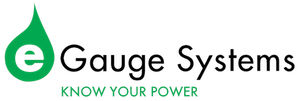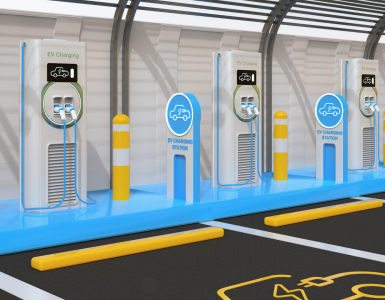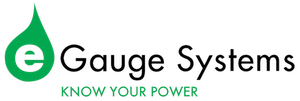Understanding LEED credits and electric sub-metering is important. When it comes to sustainable building practices, the Leadership in Energy and Environmental Design (LEED) certification is one of the most recognized standards worldwide. This article will explore how electric sub-metering fits into LEED certification, specifically under the current LEED v4 standards. It also looks at how it can support the achievement of energy-related credits.
What is Electric Sub-Metering?
Electric sub-metering refers to the installation of devices that measure energy usage for specific areas or systems within a building. Unlike a primary meter that tracks the total energy consumption of a building, sub-meters offer detailed insights into the energy usage of specific equipment or zones. This granular data enables building owners to manage energy more efficiently, which is particularly important for boosting LEED credit opportunities.
LEED and Energy Efficiency
Energy efficiency is a major focus of the LEED certification system, especially within the Energy and Atmosphere (EA) category. Sub-metering is a valuable tool for achieving LEED credits because it enables continuous monitoring and optimization of energy usage.
LEED v4 and Sub-Metering
Under LEED v4, several prerequisites and credits link to sub-metering to provide calculation, develop processes and procedures, and ongoing reporting for both new construction and existing buildings:
New Construction
- Building-Level Energy Metering (EAp3): This prerequisite requires the installation of meters to measure energy consumption at the building level. Building owners must commit to sharing this data with the U.S. Green Building Council (USGBC) for at least five years.
- Enhanced Commissioning (EAc1 – up to 6 points): This credit ties to developing monitoring-based procedures. It also identifies points to be measured and evaluated to assess the performance of energy-consuming systems.
- Optimize Energy Performance (EAc2 – up to 20 points): This credit is given based on a clear, data-backed plan for improvement in energy performance. Better performance = more points.
- Advanced Energy Metering (EAc3 – 1 point): This credit is granted for tracking building-level and system-level energy use.
- Demand Response (EAc4 – up to 2 points): This credit shows commitment to participation with demand response technologies and programs. These make energy generation and distribution systems more efficient, increase grid reliability, and reduce greenhouse gas emissions.
- Renewable Energy Production (EAc5 – up to 3 points): This credit is given based on calculating the amount of renewable energy needed on site. It also implements those systems to offset building energy costs.
- Green Power and Carbon Offsets (EAc7 – up to 2 points): This credit is awarded based on proof over 5 years that at least 50% of a building’s power comes from green power or the like.
Existing Buildings
- Minimum Energy Performance Required (EAp2): This prerequisite requires the use of metering. It helps understand a minimum level of operating energy performance. This must be done for a full 12 months and show a 25% increase in performance.
- Building-Level Energy Metering (EAp3): This prerequisite requires the installation of meters to measure energy consumption at the building level. Building owners must commit to sharing this data with the U.S. Green Building Council (USGBC) for at least five years.
- Existing Building Commissioning – Analysis (EAc1 – up to 2 points): This credit is granted for performing an energy audit on all direct energy-consuming or energy-producing systems. This helps determine where improvements can be made.
- Ongoing Commissioning (EAc3 – up to 3 points): This credit is given for continuously tracking and improving upon the existing building analysis and implementation measures taken. Reporting on all direct energy-consuming or energy-producing systems is required quarterly for the first year.
- Optimize Energy Performance (EAc4 – up to 20 points): This credit is awarded based on a clear, data-backed plan for improvement in energy performance. Better performance = more points. 12 months of continuous meter data is required.
- Advanced Energy Metering (EAc5 – up to 2 points): This credit is granted for tracking building-level and system-level energy use. Monthly reporting on total building consumption is required.
- Demand Response (EAc6 – up to 3 points): This credit is given for participation with demand response technologies and programs that make energy generation and distribution systems more efficient, increase grid reliability, and reduce greenhouse gas emissions.
- Renewable Energy and Carbon Offsets (EAc7 – up to 5 points): This credit can be awarded by providing proof that the building’s total energy use is met directly with renewable energy systems.
Benefits of Electric Sub-Metering for LEED Certification
Sub-metering offers several benefits that can enhance a building’s sustainability profile and help it earn LEED certification:
- Detailed Energy Tracking: By measuring the energy use of specific systems or zones, sub-metering enables building managers to identify inefficiencies and take corrective action.
- Optimization of Energy Performance: Sub-metering provides real-time data. This helps in making adjustments to optimize energy use, leading to potential cost savings and lower environmental impact.
- Verification and Accountability: For LEED credits that require ongoing monitoring, sub-metering provides verifiable data. This data proves energy efficiency improvements over time.
- Support for Demand Response Programs: Advanced sub-meters can also help buildings participate in demand response programs. This can adjust energy use during peak demand periods
. - Renewable Energy Production: Utilizing sub-meters to monitor not only consumption but also production sources helps to calculate the amount of renewable energy needed on-site. It also displays how those renewable energy systems offset consumption.
Conclusion
Electric sub-metering plays a crucial role in helping buildings achieve energy efficiency goals, which is essential for earning LEED certification. By providing detailed energy data, sub-metering supports both the verification of energy performance and the optimization of energy systems. Whether exploring LEED certification for new construction or existing structures, sub-metering is a powerful tool. It can contribute to a more sustainable, energy-efficient building.
For those looking to incorporate sub-metering into their projects, it’s important to consult the specific requirements of the LEED system you’re working within. As energy performance remains a cornerstone of sustainable building design, tools like eGauge Systems sub-meters are vital for both monitoring and managing consumption and production effectively. To learn more, visit our store at www.store.egauge.net.
Contact Us | Learn More |
Sources
LEED v4 Source 1 | LEED v4 Source 2 | LEED v4 Source 3 | LEED v4 Source 4 | LEED v5 Source















